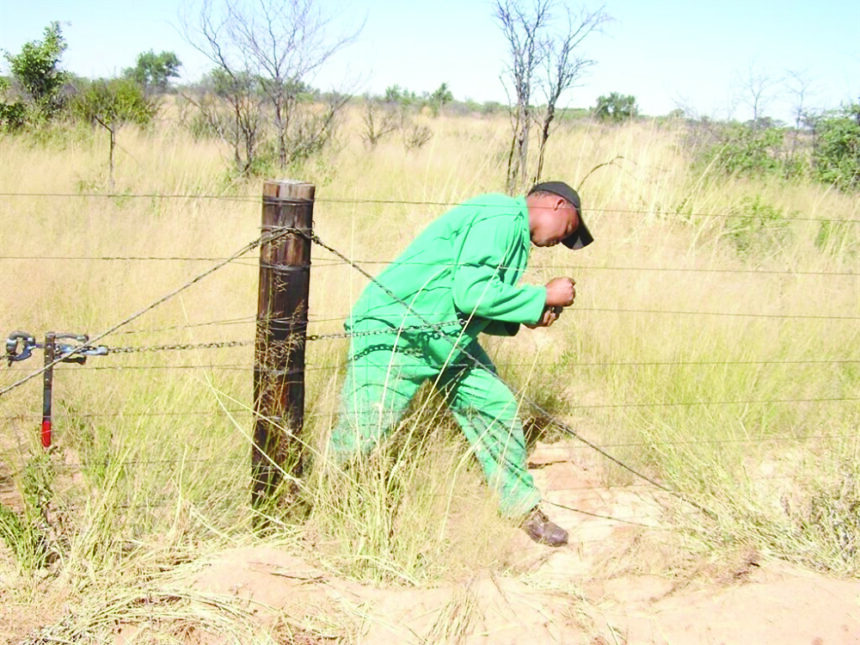The Livestock and Livestock Products Board of Namibia (LLPBN) approved and allocated N$4.5 million towards the repair and maintenance of the Veterinary Cordon Fence, which is infamously known as the red line.
The sum of N$4.5 million was approved at the LLPBN’s recent meeting, where it was resolved that the funds be transferred to the agriculture ministry for the repair of parts of the Alpha fence and the veterinary cordon fence at 20° latitude.
“The Livestock and Livestock Products Board of Namibia at its latest meeting, recommended the mobilisation of N$4.5 million to the ministry of agriculture for the repair of parts of the veterinary cordon fence. The urgency stems from the need to protect the foot-and-mouth disease (FMD)-free zone from the transmission of the disease and from Contagious Bovine Pleuropneumonia (CBPP),” LLPBN announced this week.
The red line is a stock disease control mechanism that protects Namibia’s beef exporting industry from stock diseases such as foot and mouth and lung sickness. Over the years, Namibia’s beef exporting industry has built a reputation as an industry that is committed to high standards.
This has enabled Namibia to export meat to countries in the European Union and other countries such as the United Kingdom, Norway, and South Africa.
In 2020, Namibia became the first African country to export red meat to the United States.
Historically, the demarcation was created in 1896, in the hope of containing a rinderpest outbreak in the then Imperial German colony of South-West Africa (now Namibia). Its name stems from the depiction in red ink on a 1911 map created by the German colonial administration.
Fort Namutoni was built as a police station to control north to south travel of the indigenous population and their livestock. The line continued to Okaukuejo in the west and Otjituuo in the east. Nevertheless, the epidemic reached Windhoek in 1897, wiping out half of the cattle population.
The line was moved several times, until a physical fence was built in the early 1960s, and from then on used to isolate foot-and-mouth disease outbreaks in the north from the farms in the south of the country.
Significance
Today, the red line remains a highly guarded line that has roadblocks to check every vehicle that passes. Namibia’s 1.2 million cattle represent less than a quarter percent of the global herd, which stood at one billion in 2022.
Although the contribution of agriculture to Namibia’s GDP (excluding the fishing sector) over the last five years has been just under 4%, it remains one of the most important sectors in the country, as most of the Namibian population depends directly or indirectly on the agricultural sector for their livelihoods.
Livestock contributes to approximately two-thirds of Namibia’s annual agricultural production, while agriculture and forestry account for the remaining third. Global beef production is estimated to have reached 59 million tonnes in 2022, compared to Meatco’s processed beef of 8 588 tonnes in 2022/23. Due to Namibia’s nominal share in global beef production, it is imperative that the country focuses on selected niche and premium markets for its high-quality products.
-ohembapu@nepc.com.na


